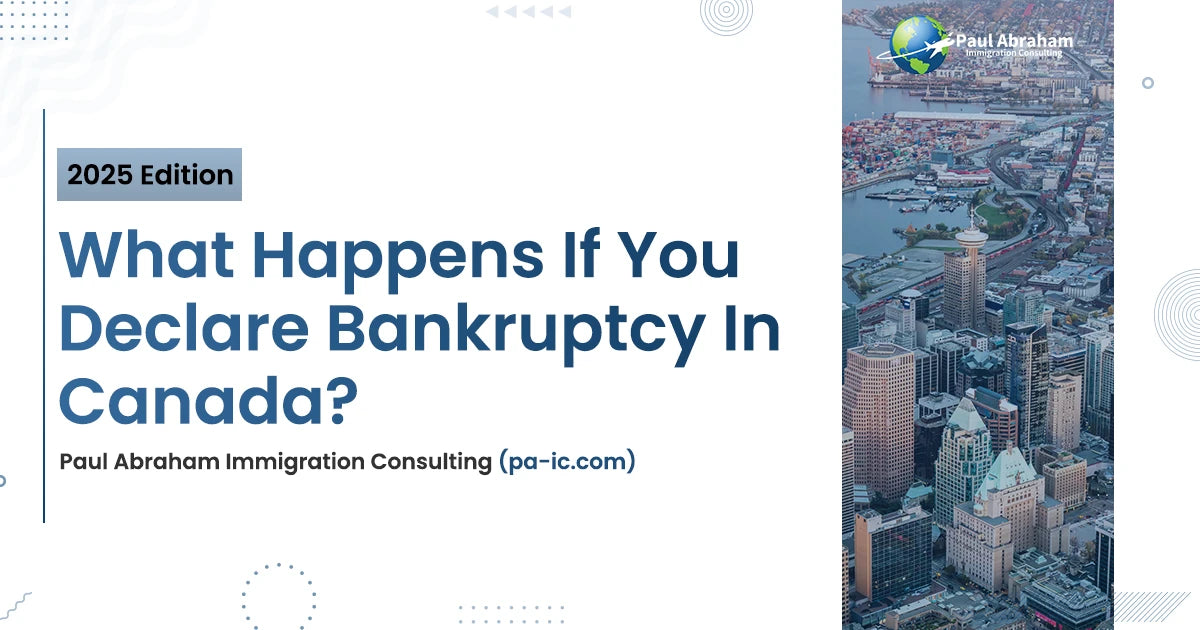Understanding Bankruptcy in Canada
Bankruptcy in Canada is a legal process designed to help individuals or businesses who can no longer repay their debts. While declaring bankruptcy may sound intimidating, it is a structured and federally regulated process that relieves those struggling financially. Managed under the Bankruptcy and Insolvency Act (BIA), the process offers a fresh start while balancing creditors' rights.
What Is Bankruptcy in Canada?
Bankruptcy is a legal declaration that you’re unable to repay your debts. Once filed, a Licensed Insolvency Trustee (LIT) takes control of your financial affairs, assets, and debts. The trustee manages your assets (except exempt items), notifies your creditors, and ensures that your obligations under bankruptcy laws are met.
It is not a punishment, but a financial tool.
Who Can File for Bankruptcy in Canada?
To be eligible to file for bankruptcy, you must:
- Owe at least CAD1,000
- Be insolvent (unable to repay debts as they come due)
- Reside, do business, or own property in Canada
Canada Bankruptcy Process: Step-by-Step
| Step | Description |
| 1. Consult a Licensed Insolvency Trustee (LIT) | Only a government-licensed professional can file bankruptcy for you. |
| 2. Evaluation of Finances | The LIT reviews your income, assets, and debt obligations. |
| 3. File for Bankruptcy | Legal documents are filed; creditors are notified. |
| 4. Asset Management | Some non-essential assets are liquidated (sold) to repay creditors. |
| 5. Monthly Payments & Counseling | You may need to make surplus income payments and attend credit counseling. |
| 6. Discharge from Bankruptcy | Typically after 9–21 months (first-time), your debts are legally erased. |
What Happens to Your Assets?
Not all your belongings are taken. Certain assets are exempt from seizure, and these vary by province.
Common Exempt Assets in Most Provinces:
- Basic household furnishings
- Personal clothing
- A modest vehicle (up to a certain value)
- RRSPs (except recent contributions)
- Tools of your trade
How Does Bankruptcy Affect Your Credit?
- A first-time bankruptcy stays on your credit report for 6 years after discharge.
- During bankruptcy, your credit score drops significantly.
- You will find it difficult to obtain new credit, rent property, or get favorable loan terms.
That said, many Canadians rebuild their credit within 2–3 years of discharge with responsible use.
Bankruptcy Statistics in Canada (2025)

According to the Office of the Superintendent of Bankruptcy (OSB):
- Over 87,000 insolvency filings were recorded in 2023
- Of these, 59% were consumer bankruptcies, and 41% were consumer proposals
- Average consumer debt at filing: CAD 54,000
Alternatives to Bankruptcy
Bankruptcy is a last resort. You might consider:
- Consumer Proposal: Legally binding debt settlement with reduced payments
- Debt Consolidation Loan: Combine all debts into one lower-interest loan
- Credit Counselling: Non-profit agencies negotiate reduced payment plans
Pros and Cons of Filing Bankruptcy
| Pros | Cons |
| Debt discharge (fresh start) | Damages your credit for years |
| Stops wage garnishment | Loss of non-exempt assets |
| Legal protection from creditors | Court-mandated obligations and counseling |
| Quick resolution (9-21 months) | Public record of bankruptcy |
How Much Does It Cost to File for Bankruptcy in Canada?
- Basic administration fee: ~CAD1,800
- Surplus income payments: Based on your income (if applicable)
- Two mandatory credit counseling sessions: Included in filing
Your LIT will break this down during your consultation.
Final Thoughts
Bankruptcy in Canada is not a failure; it's a legal solution when financial obligations become overwhelming. With proper guidance and planning, bankruptcy can offer a much-needed fresh start. However, it's important to fully understand your options and consult a Licensed Insolvency Trustee before proceeding.
Whether you choose bankruptcy or explore alternatives, take the first step towards financial clarity and peace of mind.

